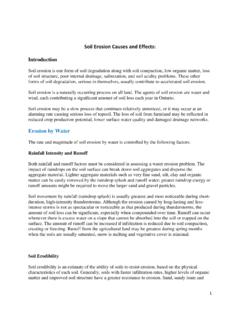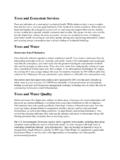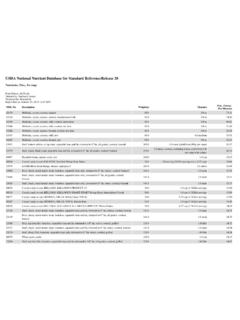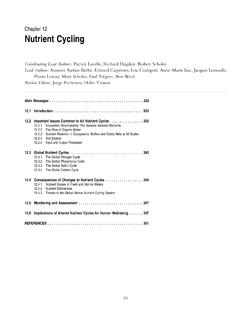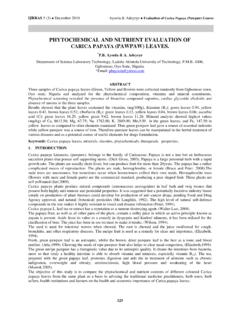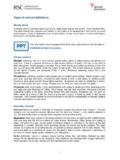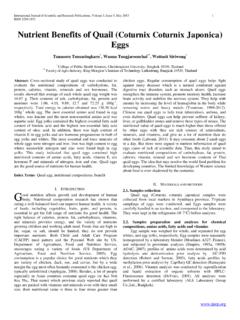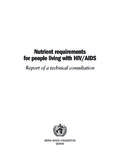Transcription of NITROGEN CYCLE - Envirothon
1 CARBON CYCLE . NITROGEN CYCLE . PHOSPHORUS CYCLE . nutrient Cycles Notes: Carbon CYCLE * Carbon EXISTS in abiotic environment as: 1. Carbon dioxide [CO2 (gas)] in the atmosphere dissolves in H2O to form HCO3- 2. Carbonate rocks (limestone & coral = CaCO3). 3. Deposits of coal, petroleum, and natural gas derived from once living things 4. Dead organic matter (humus in the soil). * Carbon ENTERS biotic environment through: 1. Photosynthesis: changes light energy to chemical energy * Carbon RETURNS to atmosphere by: 1. Respiration CO2. 2. Decomposition / Decay 3. Burning * Carbon CYCLE and Humans: 1. Removal of photosynthesizing plants 2. Combustion of fossil fuels NITROGEN CYCLE * ~79% of air is N2 gas * N is essential to plants and animals * Plants and animals can't use N2 gas * Usable N: ammonia (NH3) or nitrate (NO3-).
2 * Conversion of atmospheric N2 to NH3 and NO3-: NITROGEN fixation 1. Aquatic ecosystems: blue-green algae 2. Terrestrial ecosystems: bacteria on root nodules of legumes (peas, beans, alfalfa, clover). 3. Lightening * NITROGEN RETURNS to soil by: 1. decomposition of once living things ammonifying bacteria + fungi 2. exists in soil as nitrate (NO3-), nitrite (NO2-), and ammonia (NH3). * NITROGEN returns to atmosphere by: 1. denitrifying bacteria NITROGEN CYCLE and Humans: 1. NITROGEN required for genetic materials (DNA, RNA, amino acids). Phosphorus CYCLE * Major environmental reservoir: rocks 1. Leaching: water dissolves phosphates in rocks and carries to lake, stream, etc. 2. Dissolved phosphate: used by plants and passed through food chain 3. Animals return phosphorus to environment by: * excretion * death and decay Phosphorus CYCLE and Humans: 1.
3 Phosphates mined for fertilizers returns P to soil 2. Erosion: P in soil and rocks washed away into water systems
